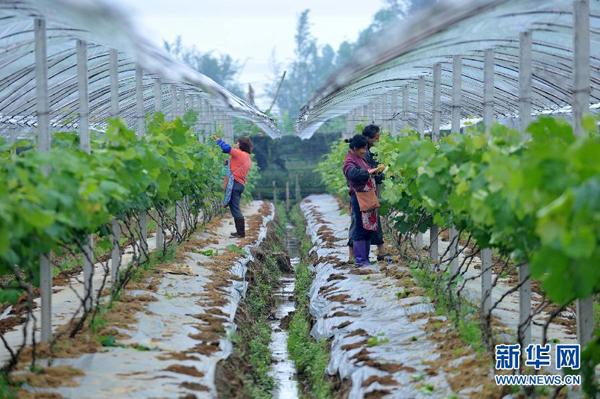Land circulation can stimulate China's rural reform
- By Xu Xianglin
 0 Comment(s)
0 Comment(s) Print
Print E-mail China.org.cn, March 9, 2014
E-mail China.org.cn, March 9, 2014
|
|
|
Rural land circulation means farmers transfer their land operation rights so that dispersed farmland can be centralized for intensive mass agricultural production. |
Encouraging rural land circulation was put forward as one of the central government's major tasks in the comprehensive deepening of the ongoing reform program during the Third Plenary Session of the 18th National Congress of the Communist Party of China (CPC) held in November 2013.
As a major policy on land reform, it is now causing heated discussion at the ongoing annual sessions of the National People's Congress and the Chinese People's Political Consultative Conference. This raises questions as to the nature of the changes the new policy will bring about in agricultural development and farmers' lives.
Improving land use and ensuring food safety
Rural land circulation means farmers transfer their land operation rights so that dispersed farmland can be centralized for intensive mass agricultural production.
The system of contracted responsibility linking remuneration to output was first implemented in rural areas in 1978, greatly arousing farmers' enthusiasm for production, and laying a foundation for land circulation.
However, with the increasing numbers of rural young people swarming into big cities in search of work in recent years, much farmland has been left unused as the elderly villagers and children left behind in the countryside were unable to cope with heavy agricultural production.
For example, about 20 percent of paddy land in Guangdong Province has been left unused, while China is dependent on imports for 10 percent of its grain.
Thus, promoting the circulation policy can help enhance the use of unused land. The policy, if handled well, would make China self-sufficient in certain agricultural products so that, "we can carry the bowl in our own hands," in the words of President Xi Jinping.
Meanwhile, the policy will also have a positive effect in ensuring China's food security and solving the world's food crisis.






